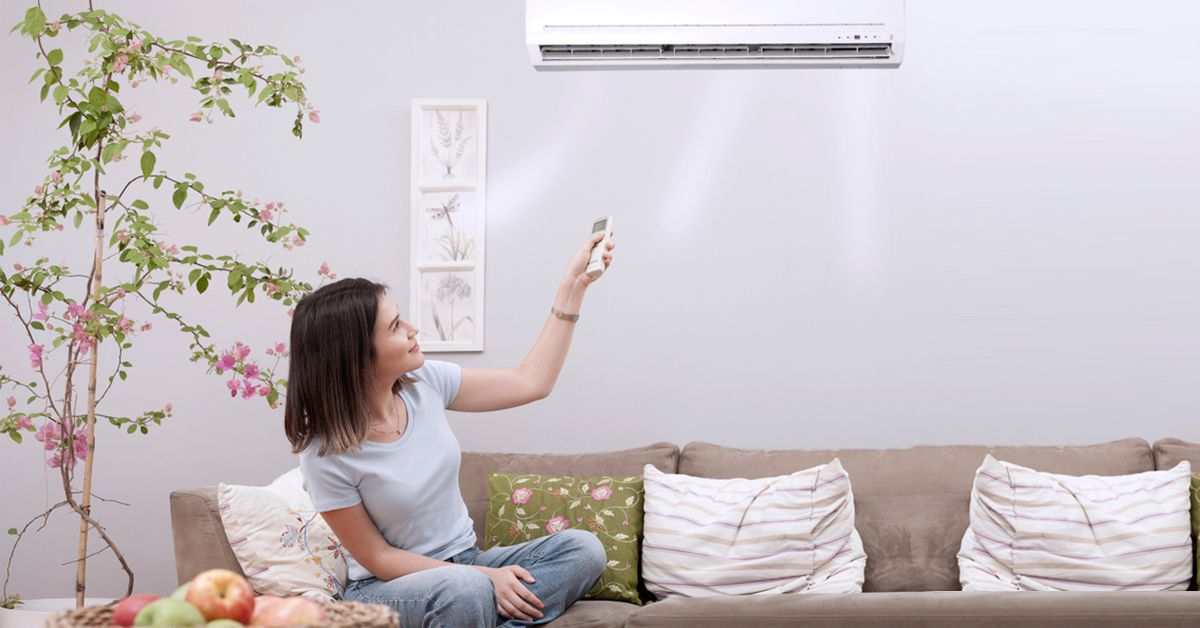When most people think of air conditioning, they imagine cooling or heating their home at the touch of a button. But modern air conditioners are becoming far more intelligent, thanks to artificial intelligence (AI), advanced sensors, and smart home integration.
For homeowners, these new features aren’t just impressive tech—they offer better comfort, lower energy bills, and healthier indoor air quality.
In this article, we explore how AI-powered air conditioning is changing the game, and what smart features to look for in your next system.

Smart Movement Sensors for Room Occupancy Detection
One of the most innovative advancements in modern air conditioning is occupancy sensing technology. Using infrared sensors, thermal cameras, or ultrasonic detection, some systems can automatically detect when people enter or leave a room.
When no one is present, the system adjusts or powers down to save energy. Once someone enters the space, the system resumes operation to ensure comfort. This is particularly valuable in open-plan homes, offices, and multi-zone ducted systems.
For homeowners concerned about energy costs during long winter heating periods or hot summer days, this technology ensures that you’re only paying to heat or cool rooms that are actually in use.
AI-Driven Temperature and Humidity Control
Traditional thermostats operate on simple temperature settings. AI-enhanced systems go a step further by learning your preferences, lifestyle patterns, and even external weather conditions.
Some features include:
- Adaptive learning: The system predicts when you’re typically home or away and adjusts settings automatically.
- Humidity balancing: AI algorithms manage both temperature and humidity, making your home feel more comfortable even at slightly higher or lower temperatures.
- Weather integration: Certain models can pull real-time local weather forecasts and adjust indoor settings in anticipation of hotter or colder conditions.
This results in more consistent comfort with minimal manual adjustments.
WiFi and Smartphone App Control
One of the most widely adopted smart features today is remote control via smartphone apps. Whether you’re leaving the office or heading home from a weekend trip, you can pre-cool or pre-heat your home with just a tap on your phone.
Popular brands like Daikin, Mitsubishi Electric, Panasonic and Fujitsu offer user-friendly apps that allow:
- Remote start/stop of your system
- Scheduling for weekdays and weekends
- Monitoring energy consumption
- Diagnostic alerts for maintenance or faults
When the weather is unpredictable, being able to turn on your heater or cooler before you arrive home means you always walk into comfort.
Built-In Air Purification and Filtration
With growing concerns about indoor air quality, many ducted and split system air conditioners now incorporate AI-powered air purification.
These systems monitor pollutant levels and automatically adjust filtration modes to capture:
- Dust and allergens
- Pollen
- Mould spores
- Harmful gases (volatile organic compounds)
- Fine particles (PM2.5)
Some brands even offer plasma-based or UV-C purification technology that neutralises airborne bacteria and viruses—particularly valuable for families with allergies, asthma, or compromised immune systems.
In urban environments, where pollen, bushfire smoke, and seasonal air pollution are concerns, advanced filtration provides year-round peace of mind.
Predictive Maintenance and Self-Diagnostics
AI-powered systems don’t just heat and cool—they also monitor their own performance.
Using internal sensors and predictive algorithms, some air conditioners can:
- Detect when filters are dirty
- Monitor refrigerant levels
- Predict component wear
- Notify you via app alerts when air conditioning maintenance is due
This helps prevent breakdowns, reduces repair costs, and ensures the system remains highly efficient throughout its lifespan.
Integration with Smart Home Ecosystems
Modern air conditioning systems can now connect to broader smart home platforms, allowing voice control and automation via:
- Google Home
- Amazon Alexa
- Apple HomeKit
- Samsung SmartThings
This allows you to create customized home automation routines. For example:
- Automatically turn off heating when you leave the house.
- Set bedroom temperatures to warm up just before your morning alarm.
- Coordinate AC operation with window blinds or smart lighting for maximum efficiency.
Energy Optimisation and Grid Integration
In the near future, AI-powered air conditioning will increasingly work with smart grids and solar energy systems.
This will allow:
- Load-shifting to run systems when electricity is cheaper or more renewable
- Intelligent management of battery storage
- Participation in virtual power plants (VPPs) for additional savings
With the uptake of solar panels and growing investments in renewable energy, these features will only become more valuable over time.
The Future of AI-Driven Comfort
Artificial intelligence is quickly becoming an integral part of home heating and cooling systems. For homeowners, these advancements offer more than just convenience — they provide meaningful savings, improved air quality, lower emissions, and greater control over comfort.
When shopping for your next air conditioning system, look beyond just the capacity and energy rating. Consider the smart features that will adapt to your lifestyle, reduce running costs, and keep your home perfectly comfortable — all powered by AI.
